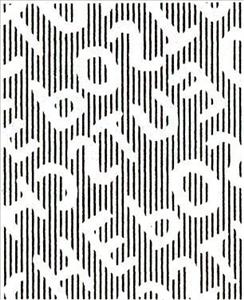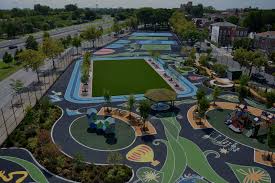Full Pane: Berlin Buildings (Berlin 1949)
Berlin Buildings (Berlin 1949)
01 January (Berlin ) within release Berlin buildings goes into circulation Full Pane Berlin Buildings face value 10 German mark
| Full Pane Berlin Buildings in catalogues | |
|---|---|
| Michel: | Mi: DE-BE MHB1B.2 |
Full Pane is square format.
with Michel Nr. 5xHB1/5xHB2/10xHB3/10xHB4 B=all ridges not perforated HAN:7479.49Also in the issue Berlin buildings:
- Booklet Pane - Stamp sheet face value 5*20;
- Booklet Pane - Stamp sheet face value 5*10;
- Booklet Pane - Stamp sheet face value 5*4;
- Booklet Pane - Stamp sheet face value 5*1;
- Full Pane - Berlin Buildings face value 10;
- Full Pane - Berlin Buildings face value 10;
|
Data entry completed
60%
|
|
|---|---|
| Full Pane Berlin Buildings in digits | |
| Country: | Berlin |
| Date: | 1949-01-01 |
| Print: | Typography |
| Perforation: | comb 14 |
| Emission: | Definitive |
| Format: | Full Pane |
| Face Value: | 10 German mark |
Full Pane Berlin Buildings it reflects the thematic directions:
A building or edifice is a structure with a roof and walls standing more or less permanently in one place, such as a house or factory. Buildings come in a variety of sizes, shapes and functions, and have been adapted throughout history for a wide number of factors, from building materials available, to weather conditions, to land prices, ground conditions, specific uses and aesthetic reasons. Buildings serve several needs of society – primarily as shelter from weather, security, living space, privacy, to store belongings, and to comfortably live and work. A building as a shelter represents a physical division of the human habitat (a place of comfort and safety) and the outside (a place that at times may be harsh and harmful).
The City Halls are part of a market complex designed by John Carrick in 1882, but the grand hall itself was designed by George Murray and opened in 1841. It was the first hall suitable for large gatherings and concerts to be built in the City and played host to the likes of Benjamin Disraeli, Charles Dickens, Hungarian patriot Lajos Kossuth and William Ewart Gladstone. From its early days it hosted a wide variety of popular and classical concerts including those by touring groups such as Louis-Antoine Jullien's celebrated London-based orchestra and Charles Halle's orchestra from Manchester. Glasgow's first regular orchestral subscription concert series, played by an orchestra managed by the Glasgow Choral Union, was given in the grand hall from 1874 until the opening of the much larger St Andrew's Hall in 1877. Arthur Sullivan was its conductor for two seasons from 1875 to 1877. The Old Fruitmarket directly adjoins the grand hall and was a functioning market until the 1970s after which it was in occasional use for jazz and folk music events. The adjoining buildings were home to bustling produce markets such as the fresh fruit and flower market and the cheese market.
Gates is the plural of gate, a point of entry to a space which is enclosed by walls.
The horse (Equus ferus caballus) is one of two extant subspecies of Equus ferus. It is an odd-toed ungulate mammal belonging to the taxonomic family Equidae. The horse has evolved over the past 45 to 55 million years from a small multi-toed creature, Eohippus, into the large, single-toed animal of today. Humans began to domesticate horses around 4000 BC, and their domestication is believed to have been widespread by 3000 BC. Horses in the subspecies caballus are domesticated, although some domesticated populations live in the wild as feral horses. These feral populations are not true wild horses, as this term is used to describe horses that have never been domesticated, such as the endangered Przewalski's horse, a separate subspecies, and the only remaining true wild horse. There is an extensive, specialized vocabulary used to describe equine-related concepts, covering everything from anatomy to life stages, size, colors, markings, breeds, locomotion, and behavior.
A monument is a type of structure that was explicitly created to commemorate a person or event, or which has become relevant to a social group as a part of their remembrance of historic times or cultural heritage, due to its artistic, historical, political, technical or architectural importance. Examples of monuments include statues, (war) memorials, historical buildings, archaeological sites, and cultural assets. If there is a public interest in its preservation, a monument can for example be listed as a UNESCO World Heritage Site. The Palgrave Encyclopedia of Cultural Heritage and Conflict gives the next definition of monument:
A park is an area of natural, semi-natural or planted space set aside for human enjoyment and recreation or for the protection of wildlife or natural habitats. Urban parks are green spaces set aside for recreation inside towns and cities. National parks and country parks are green spaces used for recreation in the countryside. State parks and provincial parks are administered by sub-national government states and agencies. Parks may consist of grassy areas, rocks, soil and trees, but may also contain buildings and other artifacts such as monuments, fountains or playground structures. Many parks have fields for playing sports such as baseball and football, and paved areas for games such as basketball. Many parks have trails for walking, biking and other activities. Some parks are built adjacent to bodies of water or watercourses and may comprise a beach or boat dock area. Urban parks often have benches for sitting and may contain picnic tables and barbecue grills.
A school is both the educational institution and building designed to provide learning spaces and learning environments for the teaching of students under the direction of teachers. Most countries have systems of formal education, which is sometimes compulsory.In these systems, students progress through a series of schools that can be built and operated by both government and private organization. The names for these schools vary by country (discussed in the Regional terms section below) but generally include primary school for young children and secondary school for teenagers who have completed primary education. An institution where higher education is taught is commonly called a university college or university.







